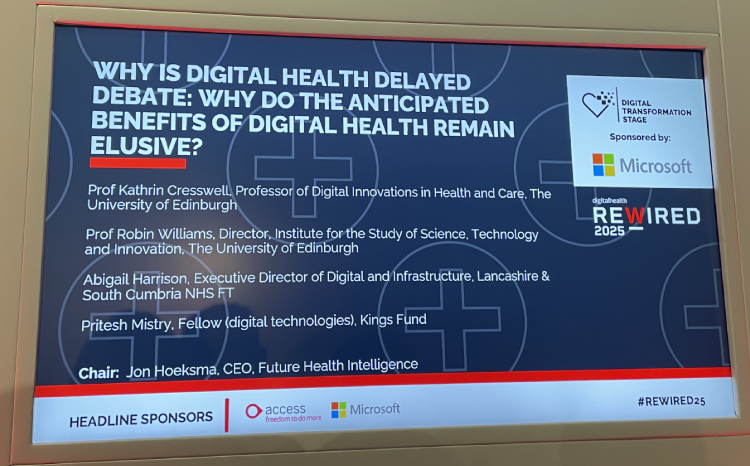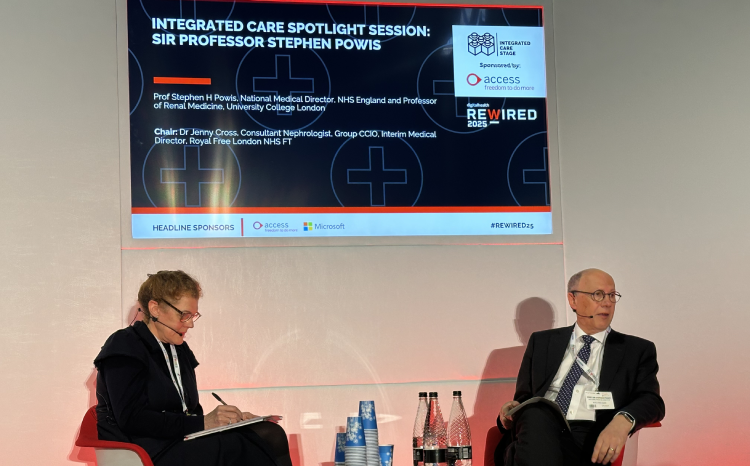We have a once in a generation chance to use tech to fix the NHS
- 23 October 2024

A “bold commitment” to tech would deliver benefits in the key areas for action identified by Lord Darzi and agreed by the government, argues Tara Donnelly
The Darzi Review describes an NHS in desperate and urgent need of improvement. Lord Darzi assesses that fundamental change is needed to recover the NHS to full health; having worked in the NHS for over 35 years, I have to say that I agree.
“The NHS is broken” statement is shocking, but in some ways, it is a relief to hear it said. The amazing goodwill and talent of staff is the only thing keeping it working more times than not.
Saying the NHS is broken doesn’t mean giving up; it just means we all need to put energy into fixing it in as smart a way as possible. And I firmly believe it is possible to fix.
A time when the NHS was not broken
I remember the heyday of the NHS, and it really was a great time. We were part way through an ambitious decade long plan under Tony Blair with several consecutive years of continued investment behind us.
While nothing was perfect, we had cracked access times – a huge issue in terms of quality of care and public confidence.
I was working at the Whittington as director of operations when one day two staff came to see me. They wanted to let me know that they were doing their best to fill theatre lists but it was becoming an issue that some patients were asking to take a later date for surgery than we were offering. We had, through a lot of hard work, achieved the shortest waiting times in London; other organisations weren’t far behind us.
At the Whitt in the mid 2000s, the maximum wait was around six weeks for outpatients and the same for surgery. The average was a fortnight for outpatients and a few weeks after that for the op. Unsurprisingly, there were many good reasons why this was too soon for some people – daughters getting married, lifetime trips abroad; surgery was important, but so was life.
I told my colleagues that some patients requesting a later date for their operation was “brilliant”; it meant “we have arrived!” Instead of making people wait for an operation date in fear and pain, we were now able to move at the speed of the patient. We were in fact matching the service provided by the private sector, but making it available to everyone, regardless of the ability to pay. As Eric Topal would later coin it, it was a case of: “The patient will see you now”.
We can do this again – and this time we have tech that can help.
Tilting towards technology
Lord Darzi outlines areas of focus for improvement of the NHS; reengage patients and staff, incentive move of care towards home through financial flows, improve productivity, tilt towards technology, clarify roles and direct energy to improving health that improves the economy and gets people back to work.
Kier Starmer’s government, on receiving the Darzi Report, has committed to three missions on health:
- Hospital to home
- Analogue to digital
- Sickness to prevention
The explicit inclusion of digital health as a core mission, as well as one Darzi’s themes, is welcome. But I would argue that a bold commitment to evidence-based technology across the NHS would have benefits across all the areas for action. We have a once in a generation opportunity to reset the NHS and strengthen it for future generations.
Tech offers the most significant immediate term opportunity for the NHS – and I say that as a very seasoned NHS leader. If I was health secretary, I would accelerate use of evidence-based tech across the NHS.
Major opportunities exist in automation, ambient documentation, engagement platforms for staff, rota booking, digital letters, patient portals, tech in care homes, digital wound care, diagnostic tests closer to home in community diagnostic centres and at home. In all these areas there is great tech, ready to scale, with good return on investment and evidence of benefit to patients or staff (and in many cases both).
Never mind the clapping, let’s have the laptops
I’d also refresh the tech hardware estate across the NHS; you’d have thought someone would be up for giving an astounding discount to the NHS for investment at this scale. We need all NHS staff to be able to deliver great care from anywhere, and they need great technology to do this. It should be data enabled, fast, ideally single sign on, lightweight and intuitive.
It costs around a £100k to train a doctor; for a tiny percentage of this we could give them brilliant technology that they love. Why don’t we? What about the community nurse or midwife who has to go back to base to write up notes, when she could be seeing another patient? It is a false economy not to set NHS staff up with kit that delivers.
Proactive digital home care
All integrated care systems should be mandated to define their top 500 patients most at risk of hospital admission and give them additional support for their physical and mental health.
This support should take the form of remote monitoring to track health and enable action prior to a health crisis. It would cover the cost of the tech and data on behalf of the patient and provide remote health coaching, as this is also evidenced to make a difference. It would link into local services such as social prescribing to reduce social isolation and charitable services that can help.
The patient groups benefiting from additional support are likely to be older people living with multiple long term conditions, with progressive diseases such as COPD (chronic obstructive pulmonary disease) and heart failure featuring strongly. Other similar nations are already doing this; Denmark, for example, has extended remote monitoring to every citizen who has severe COPD this year.
Virtual ward expansion
The NHS in England has deployed virtual wards in every ICS. They are currently providing around 8.5% of additional acute bed capacity (an additional 8,500 virtual ward “beds” when the total number of acute general beds is 100k); this should be increased to around 30%, with 100% of these patients offered tech enabled care.
If we shifted to proactive digital home care and expanded tech enabled virtual wards the change across the NHS would be dramatic. The benefits to inpatient flow in acute hospitals would be marked as occupancy rates reduce. This would enable a ramped up elective programme that would operate effectively including in winter months.
And we might be pleasantly surprised at how quickly we see a change in terms of NHS demand from those with long term disease. Work undertaken in Bristol with those at greatest risk of admission due to their COPD found impact as early as eight weeks.
These schemes also impact in areas we might not expect. The managing heart failure @ home projects across 10 NHS sites found people with this support had significantly increased confidence in managing their condition; it also found GP visits were down by one third.
We are also in an unusually good place to do these things; although the UK was late to digital home care, we have gone from ‘0 to 60’ quickly. Five years ago, there was pretty much no digital home care on the NHS. This morning over 8,000 people will have woken up in their own bed while receiving hospital level care. Every ICS has a solution in place, which means we are poised to extend this model into more patients and chronic disease support. It wouldn’t be that big a deal.
For all these reasons, I would go bold on digital home care. And the best part of all? Patients absolutely love this model of care.






